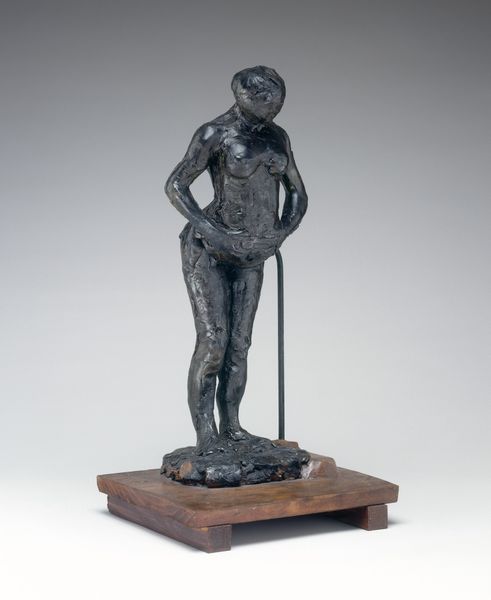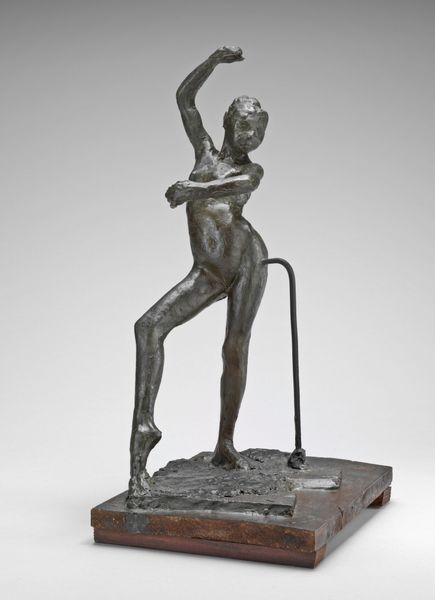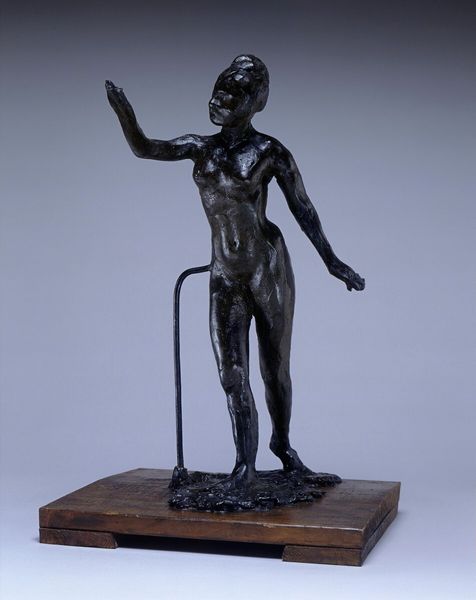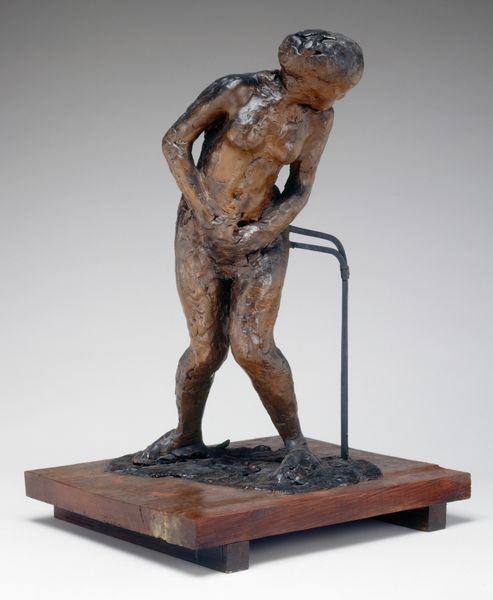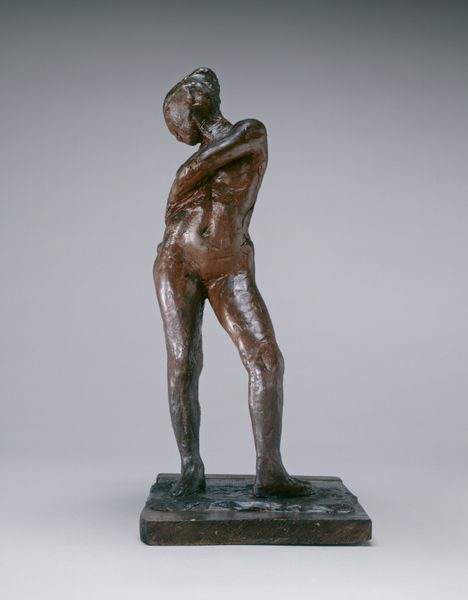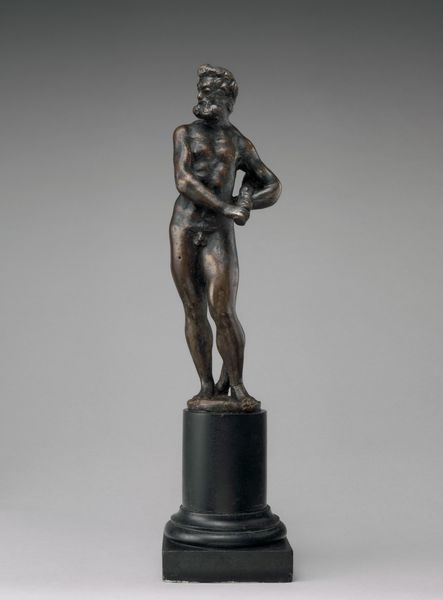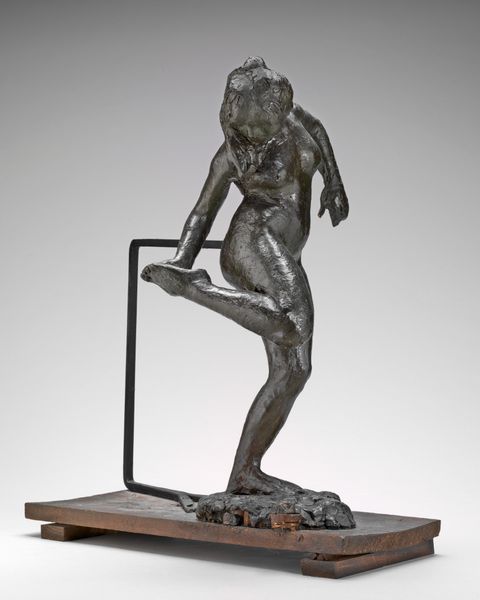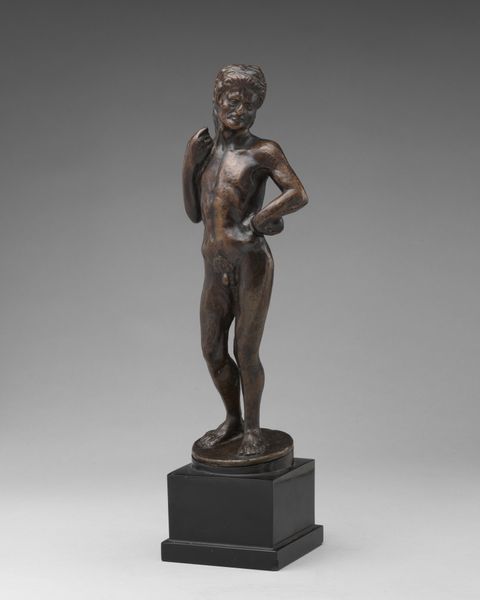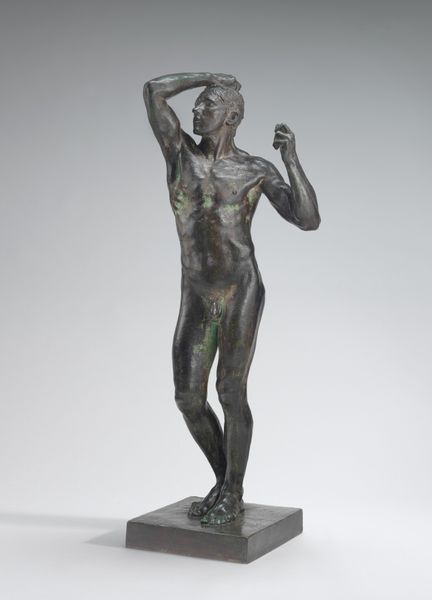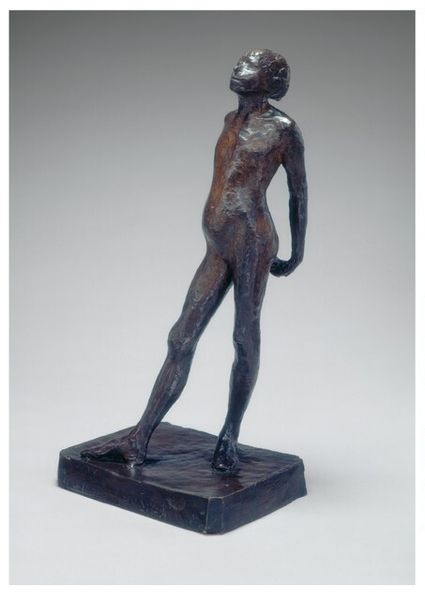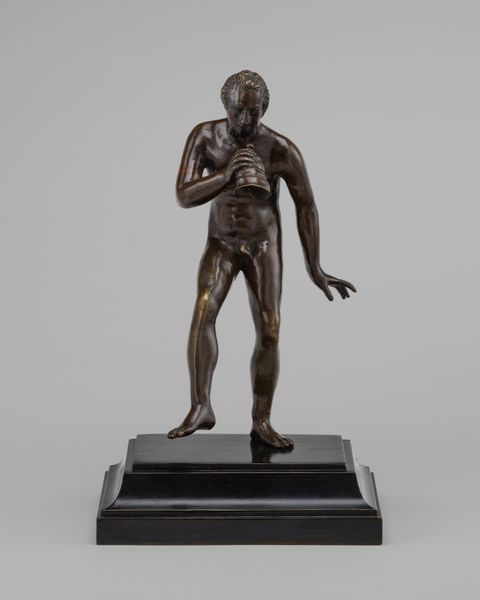
Dancer at Rest, Hands on Her Hips, Left Leg Forward c. late 1870s - 1880s
0:00
0:00
bronze, sculpture
#
impressionism
#
sculpture
#
bronze
#
figuration
#
sculpting
#
sculpture
#
nude
Dimensions: overall without base: 37.6 x 17.1 x 14 cm (14 13/16 x 6 3/4 x 5 1/2 in.) height (of figure): 37.3 cm (14 11/16 in.)
Copyright: National Gallery of Art: CC0 1.0
Editor: So, this is "Dancer at Rest, Hands on Her Hips, Left Leg Forward" by Edgar Degas, made in bronze sometime between the late 1870s and 1880s. There's something powerful about this small bronze; she seems so self-assured in her stance, almost confrontational. How do you interpret this work, considering its context? Curator: Degas’ focus on dancers, and their representation, tells us a great deal about the politics of spectacle and the social construction of femininity in late 19th century Paris. These dancers, particularly those performing at the Opera, occupied a unique social space, subject to the male gaze, and often, the aspirations and anxieties of the bourgeoisie. This work makes me wonder, what societal expectations were projected onto these performers, and how might Degas be reflecting, or perhaps even challenging them? Editor: That’s interesting. I never thought about it in terms of the ‘male gaze.’ Do you think the title, "Dancer at Rest," is ironic then? She doesn't seem restful at all. Curator: Indeed. The apparent “rest” is a performance in itself. Consider the institutional forces at play: the Opera as a highly structured environment, the ballet school shaping young women's bodies, and the art market demanding images of idealized beauty. Is Degas revealing the tension between the perceived grace and the strenuous labor required to achieve it? Perhaps the "rest" is a brief respite within a demanding system. How might a contemporary audience interpret her gaze and posture? Editor: I see what you mean! The art world then wasn’t just about aesthetic beauty but power dynamics. Her posture, almost defiant, now speaks of the dancer reclaiming some agency. It challenges that passivity. I'm viewing this bronze with entirely new eyes. Curator: Precisely! Art like this isn’t created in a vacuum. Considering its creation through historical and social forces truly changes how we engage with art.
Comments
No comments
Be the first to comment and join the conversation on the ultimate creative platform.
